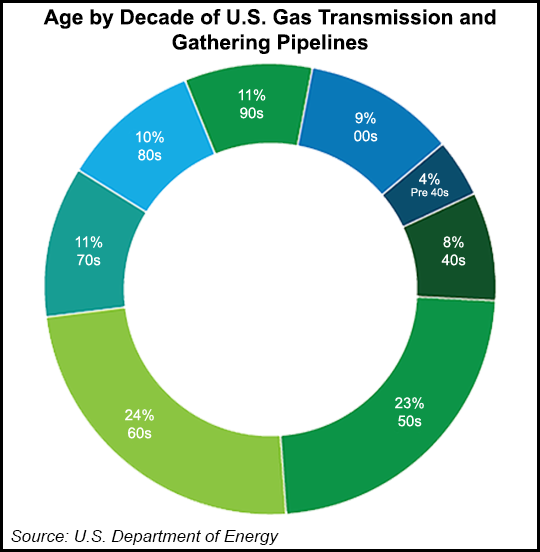Moniz Drops Labels, Says Infrastructure ‘Very Good’ But Many NatGas Pipes ‘Very Old’
Department of Energy Secretary Ernest Moniz said the Obama administration is more concerned about the modernization of natural gas pipelines, rather than oil pipelines, but he said that overall the nation’s infrastructure is in good shape.

Two days after the administration released a 348-page Quadrennial Energy Review (QER) — which outlines its suggestions for upgrading the nation’s energy transmission, storage and distribution infrastructure (see Daily GPI, April 21) — Moniz said one of the biggest challenges is to make adjustments to the nation’s infrastructure, taking into account many of the changes made possible by the shale revolution.
“It’s not that [the infrastructure] is falling apart — we actually have a very good infrastructure,” Moniz said during an interview Thursday with IHS Vice Chairman Daniel Yergin at IHS CERAWeek 2015 in Houston. “However, we’ve had tremendous changes in our energy system, [such as] oil and gas production in new geographies…the infrastructure therefore is stressed. It’s really not matched to these new opportunities that we have.”
Moniz added that “like all of our infrastructure, the major investments tend to have been made in the 50s and 60s. So we’re talking about 50-year old infrastructure. We need to renew it. We need to renew it, however, in a way that meets the new opportunities and challenges…they involve large investments for long-lived assets. So the idea here was to [create] a road map for our energy infrastructure that will meet tomorrow’s challenges.”
The QER recommended establishment of a competitive program to accelerate pipeline replacement and enhance maintenance programs for gas distribution systems, among other things. An analysis conducted for the QER said the investment in interstate natural gas pipelines could range from $2.6-3.5 billion every year between 2015 and 2030, depending on the overall level of natural gas demand.
The QER analysis also estimated the total cost for replacing cast iron and bare steel pipes prevalent in local distribution company (LDC) systems to be $270 billion.
Moniz said many of the LDC systems found in American cities are “very old…roughly half of our distribution pipes are 50 years or more years old. We have leaks. We have safety issues, [and] unfortunately we’ve seen the results of those. So we have in [the QER] a recommendation that would assist in particular low-income households to absorb rate increases that would come from accelerating the modernization of that infrastructure.”
Later during the interview, Moniz said “right now, the natural gas pipelines are where we see the bigger challenge [rather than oil pipelines].”
© 2024 Natural Gas Intelligence. All rights reserved.
ISSN © 1532-1231 | ISSN © 2577-9877 |
